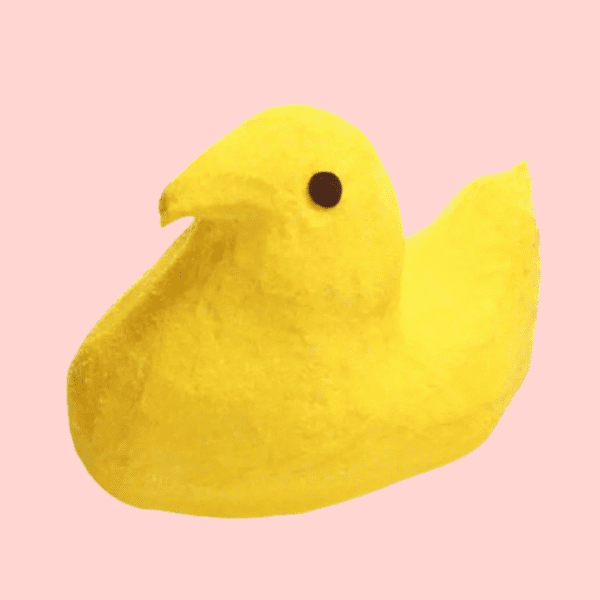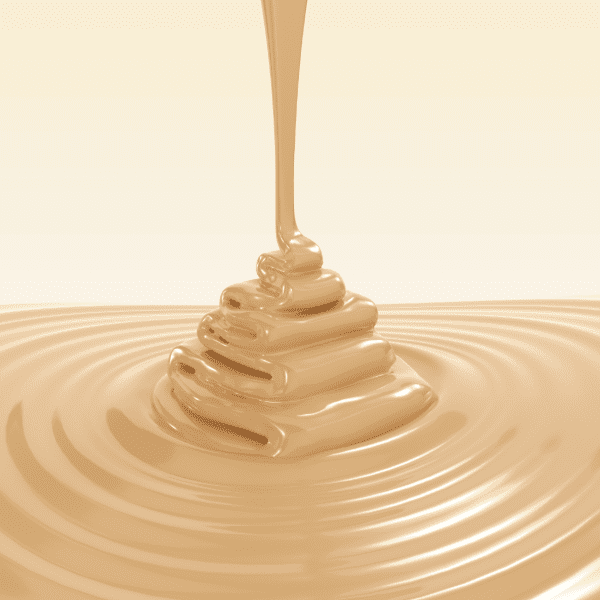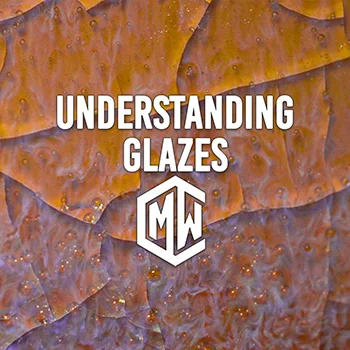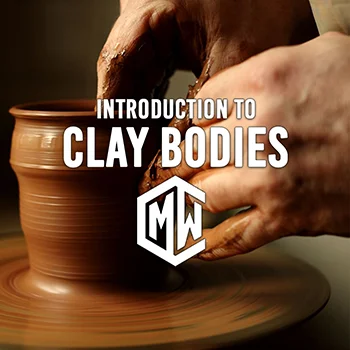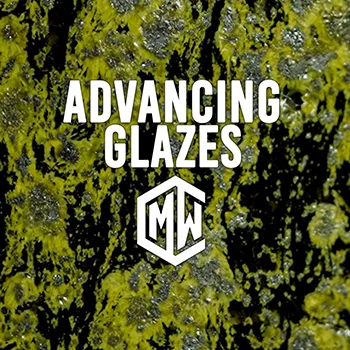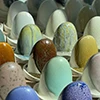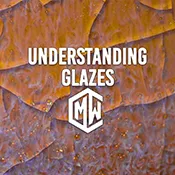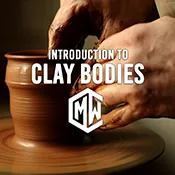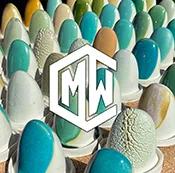Hey glaze enthusiasts! Matt here from Ceramic Materials Workshop, and today we’re diving deep into the fascinating world of Bristol glazes. If you’ve ever wondered how those gorgeous cone 6 glazes get their magic, you’re in for a treat!
This blog post is inspired by our recent “Cracking the Kiln” episode and the buzz around Bristol glazes from our “For Flux Sake” podcast. So many of you were intrigued, and we’re here to spill the glaze tea! ☕️
Bristol Glazes: The Lowdown
Think of Bristol glazes as the undercover agents of the ceramic world. They might look like your average glaze, but their unique chemistry allows them to work their magic at lower temperatures, like cone 6.(Umm… what is a cone?) As I mentioned in the video, “Bristol glazes are normal glazes for the most part, but they have some specific chemistry and some specific behaviors that lead them to work at temperatures like cone 1^ 6.” They were initially developed as a safer alternative to lead-based glazes, and boy, do they deliver!

Unmasking the Mystery of Bristol Glazes: A Deep Dive! Unleash the magic of cone 6 glazes with Bristol magic!
The Science Behind the Shimmer
The secret sauce? A dynamic duo: zinc and calcium! These elements team up to lower the melting point of the glaze, making them perfect for cone 6 firing. It’s all about that “combination of zinc and calcium that makes the Bristol reaction happen and brings our glazes down to cone 6.“
But Matt… Are cone 6 soda fired pots durable?? (Find out more…)
Why We Love Bristol Glazes
- Budget-friendly: Who doesn’t love a good deal? Bristol glazes are relatively inexpensive, making them a great option for potters of all levels.
- Easy to Use: No need for a PhD in ceramics! These glazes are user-friendly, even for beginners.
- Versatile Effects: From matte to glossy to crystalline, Bristol glazes can do it all! “They do what quote unquote regular glazes do you can make matte glazes and glossy glazes…quite good at making crystalline glazes…phase separation…” The possibilities are endless!
A Word of Caution
While Bristol glazes are generally fantastic, there’s one thing to keep in mind: durability. “One of the interesting things though about Bristol reactions is that they are not just reliant on the one limitation of Whiting and zinc…” In particular, Bristol glazes containing copper can be less durable than others, especially when exposed to acidic substances. This is something our online student Janine Ver brought to our attention through her amazing research!
The Great “Eutectic” Debate
Now, let’s talk about a term that often gets thrown around in the ceramics world: “eutectic.” As I explained in the video, “Eutectic is one of the classic words that the ceramics community uses a lot and generally uses it incorrectly.” It’s not simply about lowering the melting point (that’s where fluxes come in!). A eutectic reaction specifically refers to “a mixture of substances that melts and solidifies at a temperature that is lower than their own individual temperatures.” So, it’s the magical synergy between calcium and zinc that creates this eutectic reaction and allows Bristol glazes to shine at cone 6. (We delve more into this in our For Flux Sake Podcast Ep. 53: Cone 6 or Bust!)
Beyond Calcium and Zinc
Did you know that calcium isn’t the only element that can create this magic with zinc? “Calcium, strontium and barium will all create a Bristol reaction.” So, you can have calcium-zinc, strontium-zinc, or even barium-zinc Bristol glazes! The key is getting the chemistry just right.
Keep experimenting, keep creating, and keep those kilns firing! 🔥
Don’t forget to like this post, subscribe to our channel, and share this knowledge with your fellow ceramic enthusiasts! And if you’re feeling extra supportive, consider becoming a patron on Patreon to help us continue creating valuable content for the ceramics community.
-Matt
Ready to dive deeper?
Loved learning about ceramic glazes? Want to go even deeper? Check out our Workshops & Courses, now available in Spanish, or YouTube Channel where Matt breaks it all down, myth-busting and Stull chart included!


